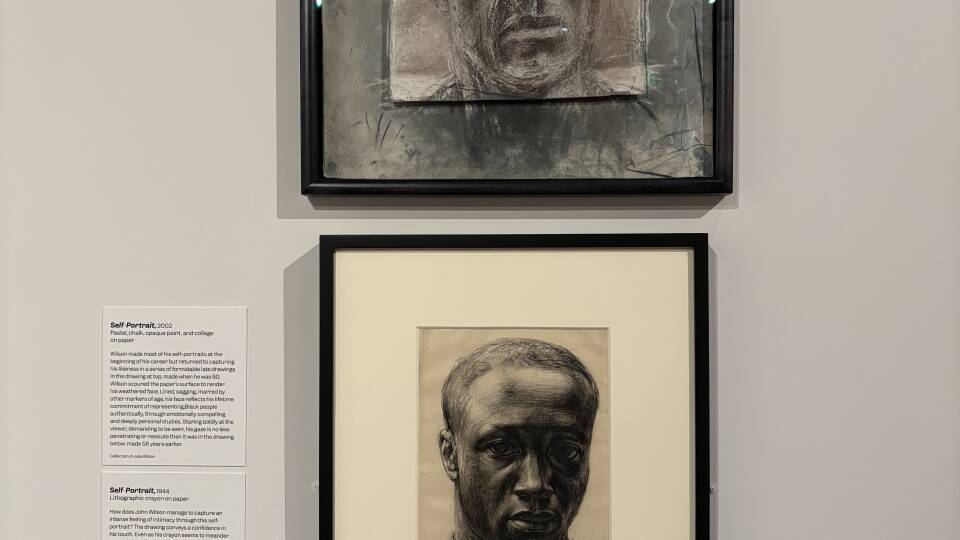Throughout his career, artist John Wilson was inspired to capture the faces of his community: Black people who lived in Roxbury. He chose to do figurative paintings, drawings and sculptures, rather than abstract work, because he was determined that Black people should be seen in the fullness of their humanity. That was the overall theme of his work, which is now in an exhibit at Boston’s Museum of Fine Arts – “Witnessing Humanity: The Art of John Wilson.”
Edward Saywell, co-curator of the exhibit at the MFA, says that showing the nuances of Black people and their lives was evident in Wilson’s earliest work – when he was 18 and still in high school. Saywell said the exhibit juxtaposes his early pieces with work he produced 60 years later to showcase how committed Wilson was to this mission throughout his life.
“Wilson explored issues of Black dignity, racial injustice, economic precarity,” Saywell said. “It is work in which he wholeheartedly believed could change perception and understanding to empower us all. And fundamentally, at the heart of all of this work, was his belief in a common humanity, in what he described as the beauty of all people.”
Wilson’s work often features himself, his family, his neighbors and other working-class Black people.Those are subjects Wilson didn’t see in art, having mostly observed caricatures and minstrel-like depictions when he was growing up in the 1930s and 1940s.
“He didn’t see himself as a Black artist, he didn’t himself within the subject matter of the works of art on view,” Saywell said. “He set out to change that, to create work that you couldn’t ignore, that could not be camouflaged.”
Carl Herbert, an art collector and John Wilson enthusiast, said Wilson achieved his goal: his pieces are impossible to ignore.
“John’s an incredible artist,” Herbert said. “His drawing is fabulous. John is drawing like a Renaissance drawer. And when you walk into a room with his drawings of his family or some of these social issues, you’re engaged.”
The majority of Wilson’s work focuses on the struggle for freedom, peace and racial equality for marginalized communities, particularly the Black community, in America. But he also parallels America’s issues with global events, including the atrocities inflicted by Nazi Germany in “Deliver Us From Evil,” or the dignity of Mexican workers, displayed in “Trabajador” and “Campesinos.”
But Herbert says that despite Wilson’s focus on Black and marginalized people, his work universally connects all people.
“You can come to John’s work as a Jew in the 40s, as an immigrant into this country, as a minority in any way, and feel this sense of isolation, and the need to stand up and to be human,” Herbert said.
“Witnessing Humanity: The Art of John Wilson” is on display at the Museum of Fine Arts Boston until June 22. Click here for more information.
Guests
- Edward Saywell, chair of the department of prints and drawings at the Museum of Fine Arts Boston, co-creator of “Witnessing Humanity: The Art of John Wilson”
- Carl Herbert, art collector who owns several pieces of John Wilson’s art















